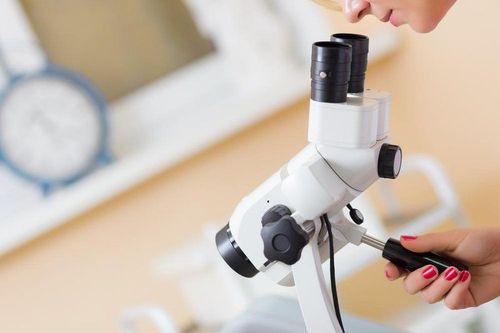This is an automatically translated article.
Cervical endoscopy and biopsy is a commonly used method to detect abnormalities in the vagina and cervix to provide appropriate treatment for the patient.
1. The effect of colposcopy and biopsy
Colposcopy is a method in which the doctor uses a special magnifying device inserted into the female genital area to examine the vulva, vagina and cervix to determine the location and extent of spread. of injury. Colposcopy is performed using a scope with a cold light source, which shines light on the cervix and magnifies the internal image 10 to 30 times, allowing the doctor to see the lesions. on the screen.
If a problem is found, the doctor may take a small tissue sample (biopsy) from the cervix or from within the opening of the cervix and take it under a microscope to confirm the diagnosis. .
Colposcopy and biopsy are usually done when there are abnormal Pap smear results. Causes of abnormal Pap test results include: Viral infections (HPV, bacteria, fungi, protozoa), atrophic vaginitis associated with menopause,... In some cases, the test An abnormal Pap indicates a precancerous or cancerous risk.
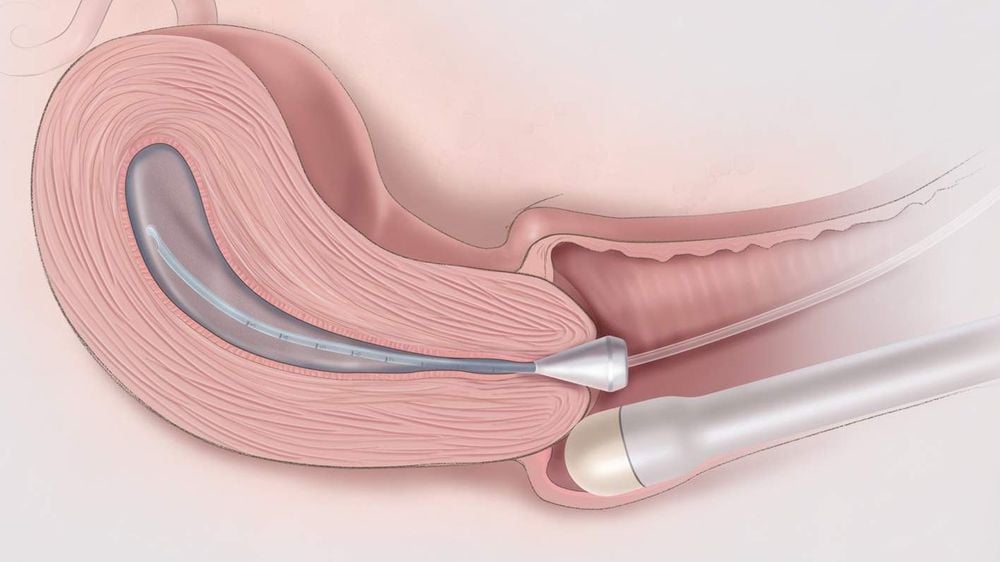
Cổ tử cung thường dễ mắc một số bệnh lý
Cervical screening and biopsy aims to:
detect cervical cancer or lesions that can lead to cervical cancer; Find out what causes an abnormal Pap test, which is advised if bleeding occurs after sex; Check for a sore or other problem such as genital warts found in the vaginal and cervical area; Monitor abnormal areas seen on previous colposcopy such as pruritus, cervicitis; Evaluation of the effectiveness of treatment methods.
2. Perform a colposcopy and biopsy
2.1 Preparation The patient needs to inform the doctor about whether she is or may be pregnant, any medications she is taking, any medications she is allergic to, has blood clotting problems, has been treated for a pelvic infection, vagina or cervix; Blood or urine tests before colposcopy and biopsy to determine if you are pregnant; Do not have sex or put anything in the vagina (douching, tampons, vaginal pills,...) for 24 hours before the procedure; Empty the bladder before the procedure; Painkillers can be used about 30 - 60 minutes before the procedure, drugs prescribed by the doctor; Non-menstrual colposcopy : During the early part of the menstrual cycle (about 8 - 12 days after the start of the last menstrual period); If a cone biopsy or other biopsies are required that requires local anesthetic, fast for at least 8 hours prior to the biopsy; Sign the consent form to the risk of the procedure; The doctor answers the patient about the necessary problems.

Thực hiện soi và sinh thiết cổ tử cung
2.2 Procedure The patient lies supine on the examination table, foot on the stirrup; The doctor inserts a speculum into the vagina, opening the vaginal wall wide to see inside the vagina and cervix; Move the colposcope closer to the vagina. Acetic acid or iodine can be used to make it easier to see abnormal areas. Can take pictures, record videos of vagina and cervix if necessary; If there is an area of abnormal tissue on the cervix, the doctor will take a small sample of tissue and have it examined under a microscope; If a tissue sample needs to be taken from inside the opening of the cervix, the doctor will perform an endocrine curettage (ECC). ECC is not performed while pregnant; The doctor applies a chemical compound to the biopsy area to limit bleeding. Colposcopy and biopsies are usually performed by a gynecologist or general practitioner. Total time to perform this procedure is only about 150 - 20 minutes.
3. Notes after colposcopy and biopsy
The patient may feel discomfort when inserting the speculum into the vagina, there may be pain when taking tissue samples for biopsy; In some cases, a cervical biopsy can cause bleeding or infection. Bleeding can be controlled with the use of suitable hemostatic solutions; With biopsies, the vagina may be sore for 1-2 days. Vaginal bleeding or discharge is normal for up to a week after the biopsy. The patient may use a tampon during this time to absorb the blood; Do not exercise for 1 day after colposcopy. Do not douche, have sex or use tampons for 1 week to allow the cervix to heal; Follow all instructions given by your doctor. If there are abnormal signs such as: Heavy vaginal bleeding, fever, abdominal pain, foul-smelling vaginal discharge, ... should quickly contact a doctor for examination and immediate treatment.
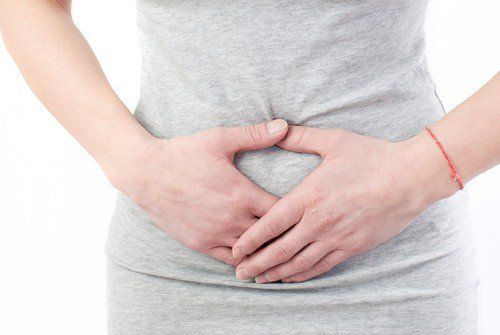
Sau sinh thiết có thể xuất hiện các cơn đau bụng dưới
4. How to read the results of colposcopy and biopsy
During colposcopy, the doctor will always report what was observed at the time of the procedure. Test results from a biopsy may be returned to the patient in a few days or so. Possible results are:
Normal
Acetic acid or iodine does not show any areas of abnormal tissue; The vagina and cervix are completely normal; Biopsy did not show abnormal cells. Abnormalities
Acetic acid or iodine showing areas of abnormal tissue: Sores, genital warts, infections, etc. found around the vaginal or cervical area; The biopsy showed the presence of abnormal cells, warning of the possibility of developing cervical cancer.
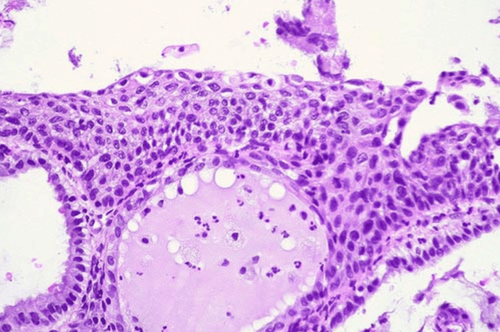
kết quả sinh thiết cổ tử cung
*Note: Several factors affect the results of colposcopy and biopsy:
Have sex within 24 hours before the procedure; Are menstruating at the time of the procedure; Douch, put on tampons, use vaginal cream or medicine within 24 hours before the procedure; Have an infection in the vagina or cervix; Women going through menopause: Hormonal changes make it difficult to see the cervical canal. Colonoscopy and biopsy are often indicated for women with abnormal Pap test results, to help support screening and diagnosis of cervical cancer or diseases such as cervicitis, vulvar cancer. , vaginal cancer, genital warts,... After performing this procedure, depending on the results obtained, the patient should strictly follow the doctor's instructions for good health and timely cope with the unpredictable course of the disease.
To meet the needs of women for gynecological cancer screening, Vinmec International Hospital currently offers a screening package and early detection of gynecological cancer, helping to detect 4 diseases early: Cancer cervical cancer, breast cancer, uterine cancer and ovarian cancer even if the patient has no symptoms.
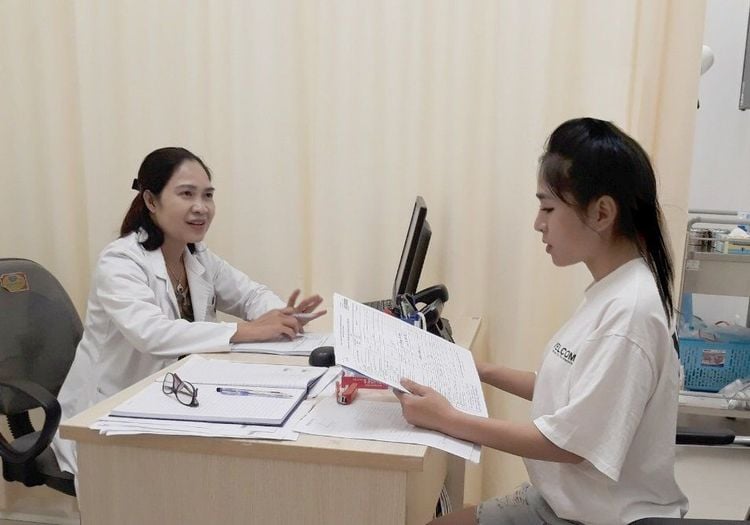
Khám phụ khoa định kỳ giúp chị em phụ nữ phát hiện sớm bệnh lý
The subjects who should use the Gynecological cancer screening and early detection package include:
Female customers, over 40 years old Customers wishing to be able to screen for pathology of breast-gynecological cancer (neck) uterus, uterus, ovaries) Customers with high risk of cancer – especially customers with a family history of breast cancer, gynecology Women of reproductive age, perimenopause Menopause and menopause Women are having symptoms of breast cancer, gynecology such as: pain in the breast, lump in the breast, bleeding outside the menstrual cycle, abdominal pain, etc... To register for an examination and treatment at Vinmec International General Hospital You can contact Vinmec Health System nationwide or register online HERE.
Recommended videos:
Cancer screening: Methods for early detection of disease, reduction of treatment costs and cancer mortality
MORE
When do you need cervical cancer screening? How long does it take for cervical cancer to form? Cervical cancer can be cured in the early stages if detected early





